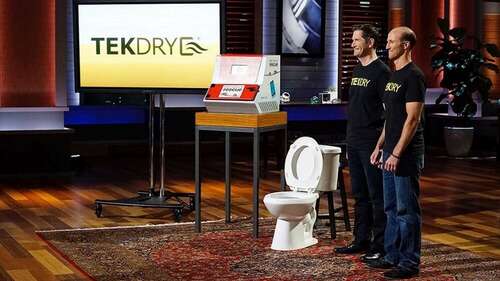
Much to the shock and horror of the Sharks, Cookson even dropped his cell phone into a prop toilet they had on stage.
After letting his cell phone soak for a bit, Cookson calmly reached his gloved hand into the commode, retrieved it, and placed it inside their patented “wet device rescue” machine filled with a bevy of special metallic beads. He explained to the Sharks that their proprietary process extracts all the air from the internal chamber while heating the beads surrounding the device. In 30 minutes, the total vacuum and the heated beads combined to turn the liquid inside the drenched device into gas that harmlessly evaporates away, leaving a 100% dry, functioning gizmo.
The goal was to hit $650,000 in revenues by the end of 2016. A store rented the box for $80 monthly, with TekDry receiving 60% of the split revenue. For a fee of $39.99, you could dry out a small flash drive or key fob, while medium-sized smartphones and cameras cost $69.99, and bigger items like laptops and game systems cost $99.99. You only paid if the process worked.
The company earned $29,000 in sales in 2015, but once it got the 600 units into Staples, it believed it could make as much as $6 million per month with $3.5 million as profit (based on the projected price points).
Barbara Corcoran thought that as cell phones came with better waterproof features and cases, their drying machine would become obsolete sooner rather than later. Lori Greiner recommended offering a mail-in system where customers send in their phones for repair.

